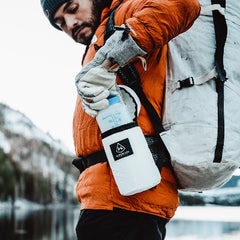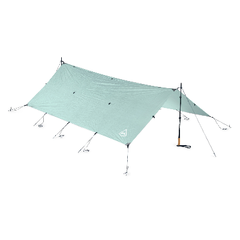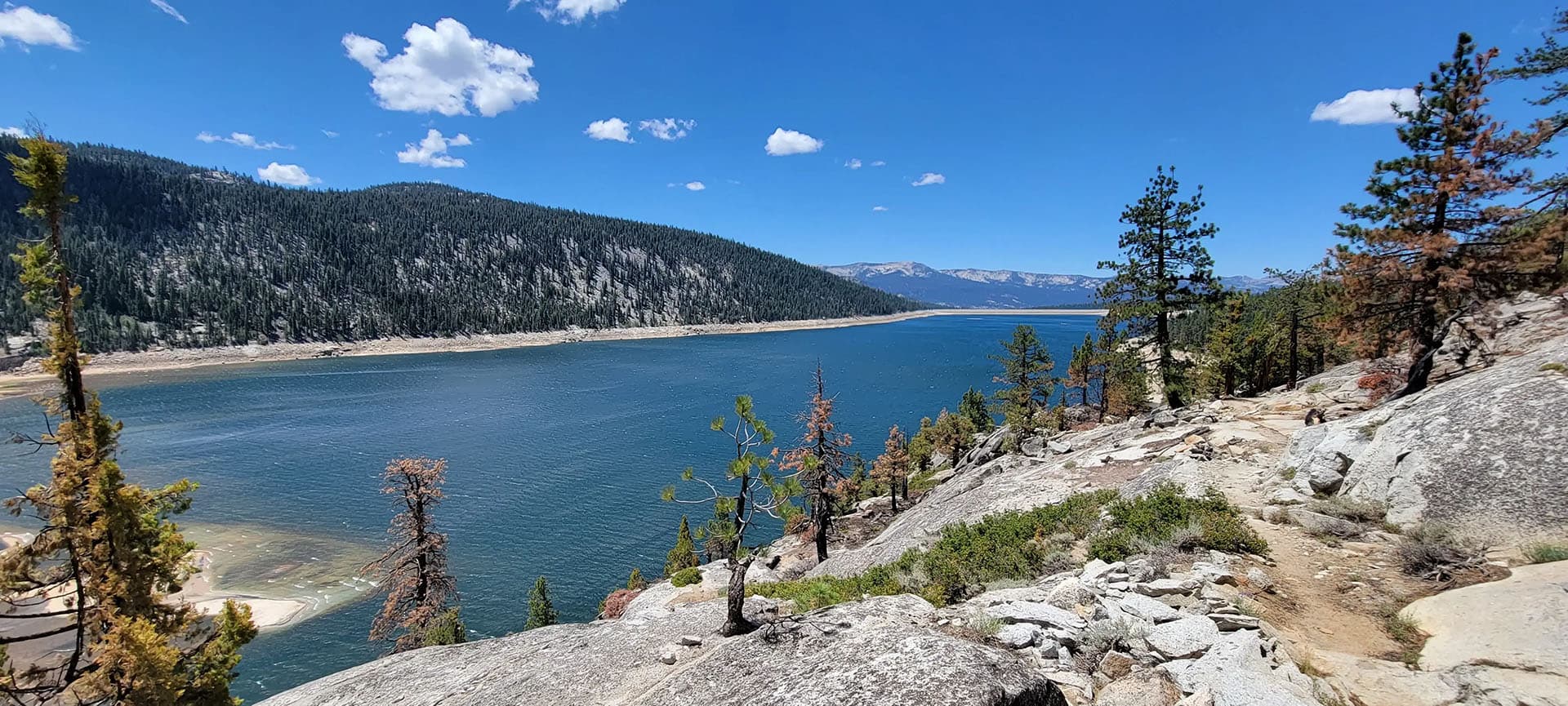Words & Photos from Shaun Mittwollen
Any time spent on the Hyperlite Mountain Gear blog or website will quickly reveal that we have some very talented photographers from all over the globe in our family. There are a million ways to document a place or people and a moment in time, but a great photographer captures it all while telling you a little bit about themselves, too. We’re pleased to introduce you to Shaun Mittwollen. Read on to find out how Shaun approaches his craft and gain a few skill-building tips and nuggets of wisdom in the process.
Name: Shaun Mittwollen
Residence: Tasmania
Years Shooting: 10 years
Favorite Location(s) to Shoot: SW Tasmania and Nozawa Onsen, Japan. Or anywhere in the mountains really.
Camera Setup: Nikon Z7, 14-30mm and 24-200mm lenses

What got you into photography, and what keeps you at it?
Strangely enough, it was the underwater world that got me into photography. Learning to scuba dive opened me to a new and alien environment, enough so that I wanted to document what I saw. I saved for about a year mowing lawns as a teenager before I bought my first real camera, a Canon G7, and housing. I mostly shot underwater photos whilst diving around home for several years. Unfortunately, I ended up flooding the housing and destroying the camera.
It wasn't till I started working ski seasons in Japan at Nozawa Onsen that photography became more serious for me. I was lucky enough to get offered a job after taking this photo of my friend Paddy making a huge road gap under the Nozawa gondola on a family ski holiday. It's a pretty classic photo, actually. Take a look at the people's faces in the gondola!
We sessioned it till the ski patrol told us to head down at the end of the day, posted the photos on Facebook, and it ended up gaining a lot of attention. By the next season, I was writing the daily snow report along with a daily photo which was a pretty fortuitous pathway!

Things just expanded from there. After a few seasons, we started riding in the backcountry a lot more, and a few friends and I had a lot of fun scoring great images in deep powder. It was almost too easy with the amazing powder; it felt like every image was a keeper unless the rider was completely under the snow. Eventually, we started ski touring and hiking more, and I gravitated towards mountain landscapes and adventure photography.

Nowadays, the thing that really keeps me at photography is the adventurous aspect of it. The more ambitious the adventure, the more compelling and interesting the photos are for me. It's like chasing swell or snow. It's just plain exciting imagining the possibilities. Perhaps there will be 30cm of fresh snow cloaking sheer peaks. Or maybe storm clouds and brilliant light. Or maybe even an aurora. It really does excite me! The thrill of the chase. I definitely prefer more expedition photography where you're out on a trip for several days, whether hiking or ski touring. I enjoy telling stories through photography in the expedition. Being out on a longer trip also takes you to some pretty special places that few get to see.

Out in the wild, what are the elements in a setting that will stop you in your tracks and make you grab your camera?
For me, the type of scene that really gets me going is a big grand mountain landscape. For example, I'm constantly gravitating towards the sharp jagged quartzite mountains of southwest Tasmania because they look so imposing and steep–quite unlike the rest of the Australian mountains (in general). It's just a matter of finding a decent foreground to complement the scene. I like looking for nice leading lines or rocks on a steep drop creating a natural vignette with a good background. Although I often like taking photos from a high point, it's very hard to achieve scale in the scene. I find I have to take a few steps back or find a slightly lower viewpoint to avoid flattening the background and losing the sense of scale. In this case, I find it very nice to have a person in the scene. Not only it adds to scale but it also personifies the landscape. Waiting for some snow, good light, and dramatic clouds formations and that for me, is the recipe for a banger!

Then there's also a natural gravitation towards action sports photography within the landscape, particularly ski adventure, which is probably my favourite type. It's doubly fun as your skiing whilst taking photos! In Tasmania, there are a lot of unskied lines, so it's a huge adventure just attempting these, and the photography, in this case, is to document what we do. With the rock type, Tassie lends itself to couloir skiing which creates awesome leading lines through the landscape. The rarity is in the snowfall. It's super hit or miss down here! You need to be able to drop everything and go at a moment's notice.

What elements will you wait or hunt for? Where and why?
The one element that excites me the most is snow. A big low-pressure system spiraling below Tasmania will whip up a cold Antarctic flow in its wake and heavy snowfalls in the mountains. Snow in Tasmania is extremely fickle. Often, it'll fall only to be almost immediately washed out by the maritime westerlies between cold fronts. You mightn't even get a clear window after the dump, so the potential for failure is high. But it's this fickleness that creates rarity in the photographs. The mountains in Tasmania are extremely jagged and imposing despite their low elevation. To have these peaks loaded with snow just makes them even more dramatic, in my opinion, and unique in the sense that they are almost never photographed in snow. It's hard work mentally and physically. The bitter yet dangerously wet cold is debilitating and absolutely type 2 fun only. But when you score, it makes all effort totally worthwhile—rewarding almost!
For example, the image below is shot from Hartz mountain, the summit of a popular day walk. It took me seven attempts and two years to finally score this dawn shot after 20cm of fresh snow. I've been chasing some similar shots in the West Arthur's, perhaps the state's most dramatic range, for almost five years and yet to succeed.

With the ski adventure in Tasmania, there is a lot of waiting around for snow and the correct conditions. But when it's good, it's like another world. The target windows are precise lasting usually a few hours to get half-decent snow conditions to ski. Add in the difficultly of accessing the lines, often ranging from hours to hike to the snow line or days; it's just a huge adventure.
Last winter Ben Armstrong and I succeeded in a long-term goal to ski the Federation Peak couloir (The North Face supported this expedition with their adventure grant). For those from overseas Fed Peak is a mountain described by Sir Edmund Hillary as "Australia's only real mountain." It's a vertical spire surrounded by some of the most heinously dense rainforests around. We thought about skiing this mountain for years, and it seemed impossible given the access, low elevation, and brutally exposed location. It was a nine-day mission, but we ended up scoring absurdly good conditions after a huge dump of snow falling to sea level around Hobart. This expedition produced photos that would surprise many about Australia. Proper alpine climbing and gnarly skiing. Our expedition was published both in Australian Geographic (linked here) and Wild Magazine. Ben also made a short video from our trip, which is linked HERE.

If you couldn't use words to describe what kind of photographer you are–you could only share one of your photos, does one come to mind? Why? Where was it taken? Describe the scenario.
No doubt about this question! I think this shot combines all my photographic interests in one. Mountain landscapes, adventure, and skiing! Much like the northern lights down in the Southern Hemisphere, we have the Aurora Australis. This shot is of Mt Field West, in you guessed it, SW Tassie. I ski toured out here in winter 2017 alone to photograph the aurora in snow and camped right on the summit. The aurora was so powerful that it was visible even with sunset glow on the horizon. I ended up staying up till about 2 am photographing the show. This is a shot of me standing on the summit. I put my camera on the tripod with a cable release set to a 10-minute delay. Timer set, I quickly skinned back and posed on the summit silhouetted against the aurora. The next day I woke up and scored some great lines off the east face before spending another night up there camped in a nearby hut. It was an epic trip, and this shot is a personal favourite of mine.

You can pass five short tips on to aspiring shooters. Go.
- Make sure you're photographing for yourself and not for likes (or similar). If you're not doing it for yourself, it's no fun and most likely not worth it.
- Expose yourself to work from the best photographers out there. It's great for inspiration and learning about composition. People like Marc Adamus, Paul Zizka, Jimmy Chin, Grant Dixon, and Grant Gunderson are some of my favourites.
- While out taking photos in a beautiful scene, make sure you take a moment for yourself to enjoy the place and not get so caught up in capturing it exclusively. It's easy to get so over-excited with a scene that you forget to actually take it in. Plus, it also aids you to find even better compositions if you stop, slow down, and look.
- When editing, which is a vital skill for a photographer nowadays, it helps me a lot to edit a photo over several sittings. I often find my eyes adjust, and what looks good at the moment may be over the top or not enough later on. So, it helps to come back with fresh eyes to have the greatest colour and light accuracy. It also helps a lot to shoot in RAW format.
- An obvious one, haha. The more you practice, the better you get. Get to know an area you want to shoot and learn about the weather behaviour. Knowledge of how the scene behaves is hugely beneficial and usually doesn't come with a single visit.

Where can we see more of your work?
Most of my best work can be found on my website linked below. I've also been putting up blog posts of our winter adventures in Tassie in the adventure stories section. I'm hoping to inspire others to explore with these posts. There's a lot of grand adventures to be had!
I'm also on Instagram @shaunmittwollen


















